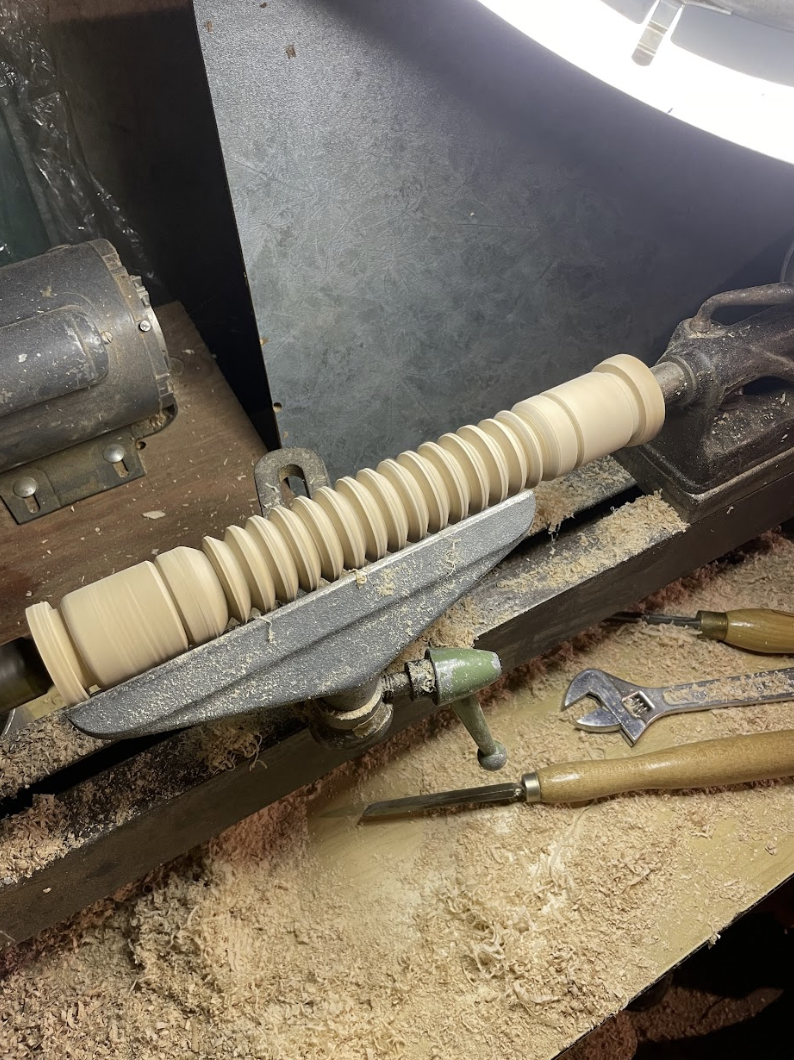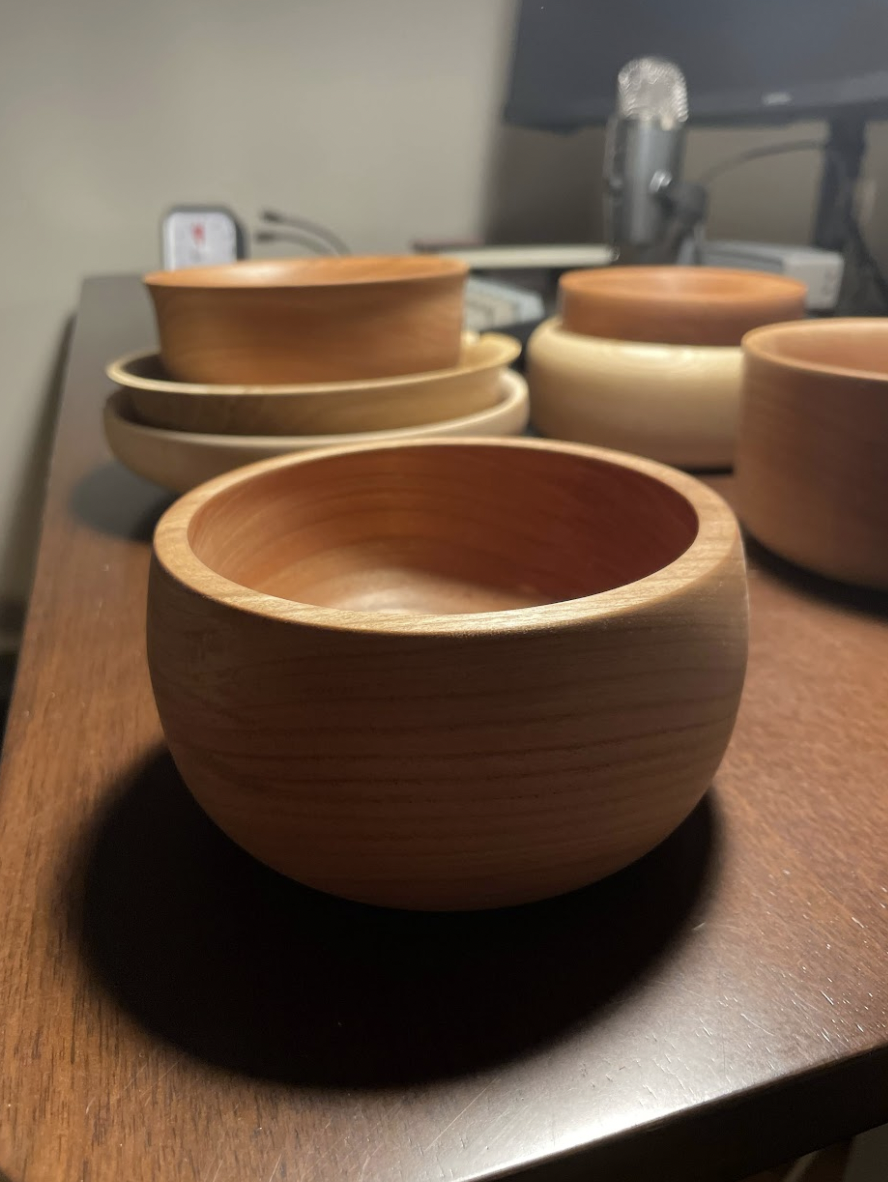Last spring, around April 2022, my dad and I were walking around the neighbourhood and met a man doing woodwork in his garage. Clyde showed us his lathe and the tools he uses to turn a variety of objects: bowls, platters, candlesticks, foot massagers.
Prior to this encounter I had never really thought about the process behind making an object like a wooden salad bowl, though I have often admired finished products. I may have had a loose understanding of what a lathe was, but I had no familiarity with the craft of woodturning.
I was intrigued. I went home and did a little bit of reading online about what woodturning was, how it worked, and what you could make using woodturning techniques. I then went back, knocked on Clyde’s door, and asked if he wouldn’t mind giving me a few lessons on his lathe using his tools.
A few weeks later I visited again, this time with eye protection, and we spent a few hours turning a maple foot massager (like a rolling pin, but for the soles of your feet). I learned about some of the key tools, how to use the tool rest and introduce the tool to your work, how to rough out a shape and how to work through various stages of roughing, shaping, detailing, sanding, and treating to arrive at a “finished product”.

I can’t say I was addicted right away; it took me several months to think about whether this was a hobby worth picking up, what equipment to acquire, and what basic skills I would need to develop to make a go of it. But there was something wonderful in that first experience that left me with a strong desire to learn more about the craft.
Now that I have picked woodturning up, I think I can summarize its appeal (to me, anyways) as having two main dimensions. I’ve deepened my appreciation for both since that first session, but I believe both were present right from the start.
The first is the tactile feedback of the experience. When you turn something on a lathe you are introducing a sharp tool (gouge, scraper, etc) into a piece of wood that is rotating very quickly. As soon as that tool touches the work, even ever so slightly, you know it: you see it and feel it as the tool responds in your hands. Very closely related to that tactile experience is the appreciation you start to form, even from the start, of whether you are doing a good or bad job. You make adjustments, you pass over a certain area again, trying to get it into the shape you want it. With every piece of effort something happens to the work, for good or ill, and you get immediate feedback on whether things are working out as they should (or could).
So that first appeal is the immediate, highly tactile nature of the feedback you get when turning a piece of work; and closely coupled to that, a growing sensitivity to the quality (or lack thereof) of what you are trying to do. Few things, from a craft perspective, are as satisfying as drawing a bowl gouge smoothly and evenly across the curve of your work, seeing the final profile emerge as you wanted it to. On the flip side, few things are as jarring as catching that same tool in the work, bringing the whole operation to an immediate, shuddering stop.
The second dimension of the appeal I’ve found in woodturning is the balance of creativity and technical competence that successful turning requires. On one hand this is a world of specific techniques and tools, of bevels ground to specific angles and practices at all stages that guide what one should do. But on the other, it is an exercise in visualizing an end form to the work, and then proceeding in that direction, or in some other, through creative, serendipitous, sometimes accidental choices or actions. The end product can be beautiful, arguably only because of this creative aspect to the process. However you explain it, turning seems to require striking a constant balance between thinking about how something should be done and feeling your way towards and expression of what you want to do.
I don’t think it’s a coincidence that these are some of the key ingredients in flow state activities as Mihaly Csikszentmihalyi thinks about them. I find myself entering a flow state quickly when turning, and staying there until fatigue begins to impact the quality of my work. It’s more of a coincidence that I first started thinking about woodturning seriously around about the time that I read Zen and the Art of Motorcycle Maintenance by Robert Persig. I didn’t pick up the craft (or hobby, until I can get to craft level work) because of the book, but Persig’s exploration of the importance of quality certainly gave me a language or a framework for how I have been thinking about building a skill.
This is already too long, but I also want to capture some of the specifics of how I’ve started and what I’ve learned. That will have to wait for another post.
